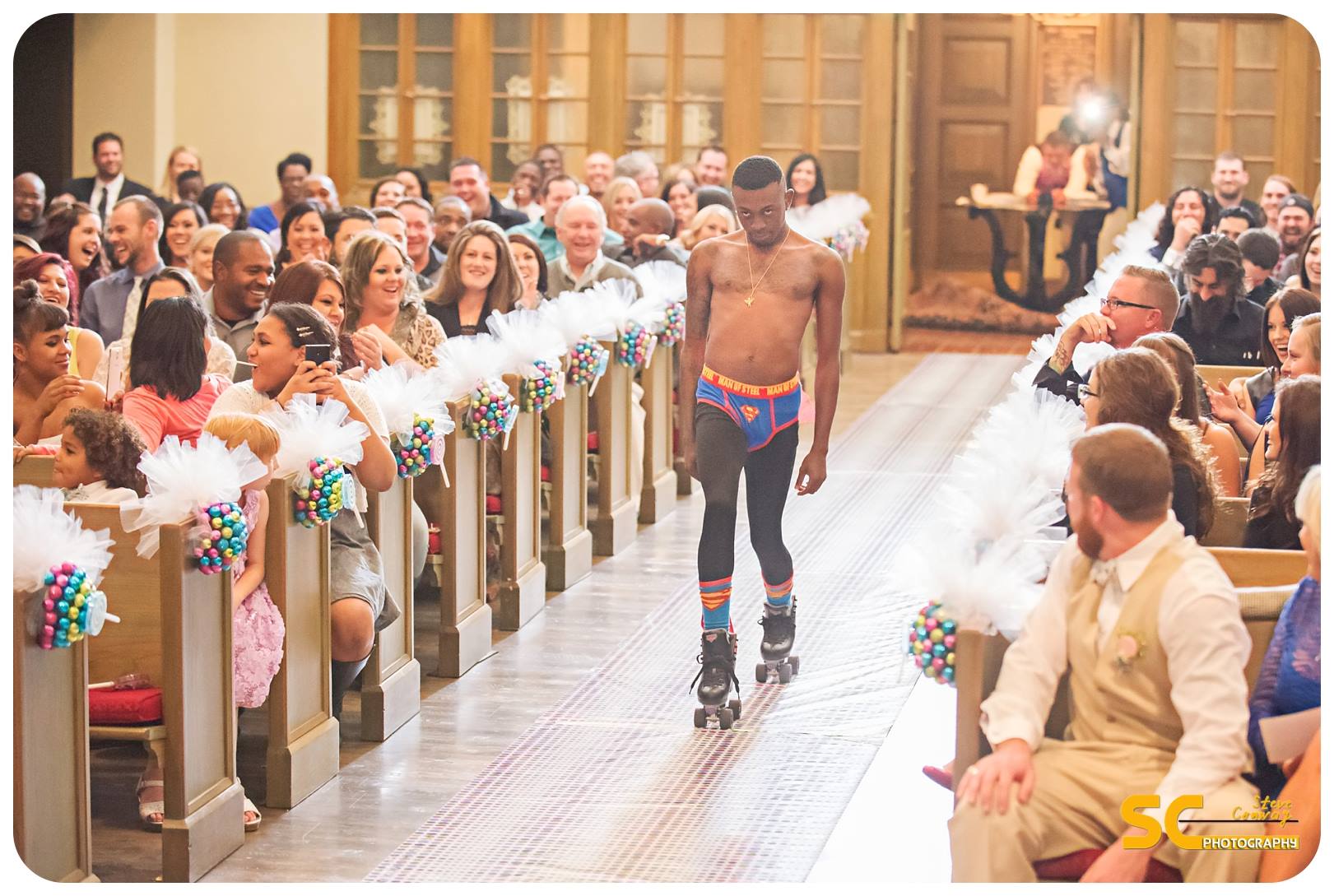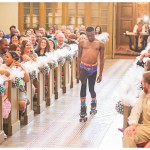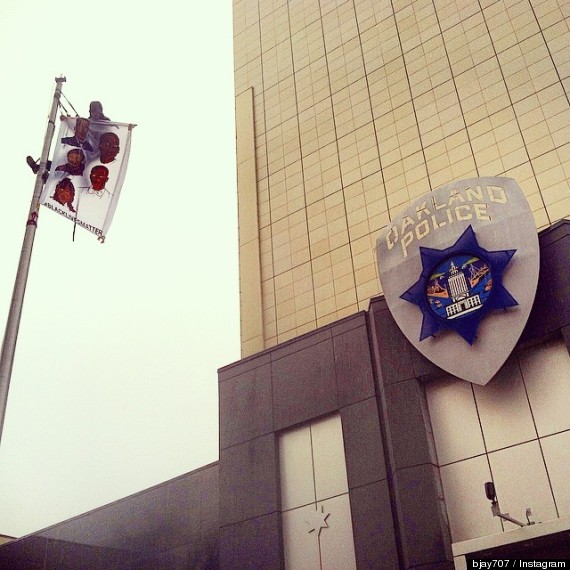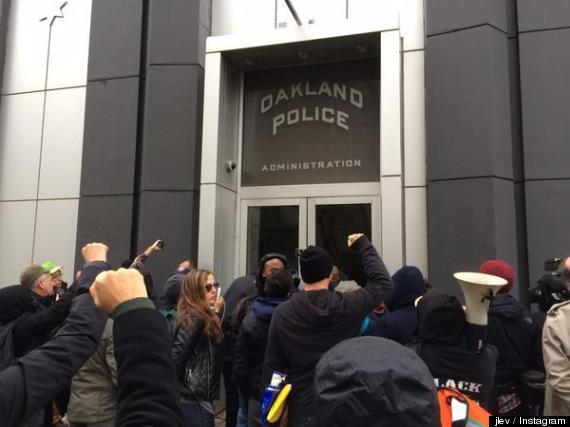
The holiday season is upon us. For me it will be a festive occasion with good company and good food (maybe a bit too much of the latter). But I cannot imagine how heart-wrenching it must be for the parents of Michael Brown, because for the first time in nineteen years they have to spend Christmas without their son. And to make it even more bittersweet, they have looming over their heads the fact that their son’s killer will not face an indictment. However, if there is not going to be justice for Brown, at least for now, then we must determine what we can do going forward to prevent a repeat of this tragedy. There are a whole heck of a lot of measures …
The holiday season is upon us. For me it will be a festive occasion with good company and good food (maybe a bit too much of the latter). But I cannot imagine how heart-wrenching it must be for the parents of Michael Brown, because for the first time in nineteen years they have to spend Christmas without their son. And to make it even more bittersweet, they have looming over their heads the fact that their son’s killer will not face an indictment.
However, if there is not going to be justice for Brown, at least for now, then we must determine what we can do going forward to prevent a repeat of this tragedy. There are a whole heck of a lot of measures we need to take if we want a society that reduces crime and treats people fairly under the law. And there is one major reform that will go a long way: police body cameras.
Amongst all the news coverage on rioting in Ferguson, there has been decidedly less coverage about Brown’s parents campaigning to pass a “Michael Brown Law” to require all law enforcement officers to wear body cameras. I don’t know that it’s feasible to equip every single police officer nationwide, but nonetheless this should be a requirement for almost all of them, especially in areas with major tension between law enforcement and communities.
Body cameras would serve as an important tool in law enforcement because, as we see in the Michael Brown case, folks can have vastly differing recollections of events. In this case, there were so many conflicting testimonials from eyewitnesses that PBS Newshour was able to construct a complex chart summarizing all the variations in accounts.
The result is like a real-life version of the movie Rashomon: Vastly different accounts of the same story from people who have different interests or agendas. One grand jury witness said Officer Wilson shot Brown in the back, then stood over a dying Brown and “finished him off” with an additional shot. The witness then acknowledged he never actually saw that, but inferred that had to be the case based on experience living in the area.
Another eyewitness claimed she saw Brown beat Officer Darren Wilson in his car, and Wilson only fired after he staggered out of the car while Brown charged him. However, there were also major holes in her story, including that she claimed to have a traveled a route that is obstructed, and on Facebook she had posted, “They need to kill the fucking niggers. It is like an ape fest.“
But even if we put aside the extreme examples of questionable eyewitness accounts, the fact of the matter is that the human brain’s intake of information is not the built-in video camera we might think it is, meaning eyewitness accounts are far less reliable than how they are treated in the criminal justice process.
For starters, the ability of the human brain to take in information is not nearly as good as we might think. In one infamous study, participants were tasked with watching video of two teams passing basketballs and counting how many passes one team made. The footage also included a man in a gorilla suit casually walking across the court. Because participants were focused on a task, half of them did not notice the literal gorilla in the room. Another contributor to ignoring the gorilla is that people will take in information based on what they expect to happen. So in a case like Michael Brown, folks could very well take in information based on what they expect a cop and a black teenager would do.
And the intake stage is only the beginning of our brains processing information wrong. Our ability to remember and recall events is also quite faulty. In fact, all it takes is the power of suggestion for us to get details wrong or even “remember” things that didn’t happen. For one, subtle differences in the wording of questions to eyewitnesses is enough to sway their memories, often in favor of a prosecutor or law enforcement officer’s preconceived belief e.g. “Did he have blond hair?” compared to “What color was his hair?”; or congratulating an eyewitness for giving a certain answer. Even gesturing when asking questions is enough to influence eyewitnesses. Other times it is less subtle, such as a witness in a rape case picking out a rapist from an array of photos in which the prime suspect had a letter R on his picture.
Even worse, people can be manipulated to recall things that never happened. In another study, participants were given four written anecdotes from their childhoods, of which one was fabricated but sounded realistic based on background information supplied by a relative. About a third of the subjects said they had a recollection of the spurious anecdote, and still did after two follow-up interviews.
To give you an idea of just how faulty eyewitness accounts can be, consider the sinking of the Titanic. (Yes, I’m going somewhere with this.) You might notice that every film reenactment depicted the ship sinking totally intact, up until James Cameron’s version showed the ship correctly splitting in half. That’s because, despite hundreds of people witnessing the sinking of the largest ship afloat up to that time, only fourteen survivors testified that they saw it break apart, leading to a consensus that the ship sunk intact until expeditions in the last few decades proved otherwise.
The point? Our memories often fail us. At the same time, it seems most people, juries included, think that memories are infallible and that eyewitness testimony is like someone replaying a video stored in one’s memory bank. However, the reality of recalling events is, in the words of psychologist and memory researcher Elizabeth F. Loftus, “more akin to putting puzzle pieces together than retrieving a video recording.”
This goes a long way to explaining how there is misidentification by an eyewitness in 72 percent of convictions overturned by DNA evidence. If the folks who watched the Titanic sink couldn’t get the details right, then how do we trust eyewitness accounts in the Michael Brown murder or any other situation? Also, if there are conflicting recollections of events, how can you determine whose is the truth, or closest to it? As we see in the above example, the recollection of the majority wasn’t right, so what can you possibly do to figure out who is “right”?
Therein lies the issue: when we have to make a judgment call over conflicting accounts, whose do you go by? Especially when one or more eyewitnesses knows his or her recollection could be the difference between walking free or a life sentence?
The unfortunate reality is that juries tend to trust someone based on emotional subjectivities instead of the facts of the matter. Studies show that jurors are more likely to believe someone’s testimony if the eyewitness seems confident, or is particularly emotional. And it is not limited to juries: a survey of judges found that one third thought an eyewitness’s confidence was a good predictor of accuracy, and another third were unsure.
Even if we don’t use impulses to decide whose testimony is reliable, other allegedly more rigorous methods are also contrived. Take for example this law professor writing in the Washington Post that grand jury testimony from Witness 10 exonerates Darren Wilson because this witness had a clear line of sight, his account was consistent over time, and most of his testimony matched up with the forensic evidence. However, simply having a good view of the situation does not somehow make someone have a better recollection of the events, regardless of its consistency over time; and getting some things right does not mean a witness gets everything right.
Another issue with jurors is that they might believe a police officer’s version of events more readily, especially if they are part of the fortunate demographics that have not been targeted by police. After all, Jerry Orbach’s character on Law and Order seems like a stand up guy. So does Joe Friday, and Jimmy Smits’s character on NYPD Blue. If that is someone’s primary “interaction” with law enforcement, it could very well persuade him or her that a law enforcement officer must be telling the truth. This deference to police accounts may be a major contributor to the lack of indictments against cops.
Of course, some of us who have dealt with law enforcement in real life, including many people of color such as myself, can attest that police officers are not always honest like shown on television. They are human, meaning in the moment they may do things other than what their manual says, and even subsequently construct a version of the truth (to put it mildly) that is in their interest. The phenomenon is so widespread that there’s even a term for it: “Testilying.”
And indeed, there are aspects of Darren Wilson’s testimony that seem a bit contrived, to say the least. He claims that he felt “like a five-year-old holding onto Hulk Hogan,” which sounds unlikely given the fact that Wilson is 6’4″ and Brown was 6’5″, unless Wilson knows some very big five-year-olds. And Wilson talks about being viciously assaulted, yet photos of him immediately afterward show at most some minor skin blemishes.
So given that memory is highly unreliable and malleable, as demonstrated by the “he said, she said, they said” affair to the Nth degree in the Michael Brown murder case, then clearly we need to have in place tools that can objectively gather data, and police body cameras are a good start. Body cameras have the potential to make major inroads in ending police officers’ ability to construct the truth, something that is already beginning to happen thanks to ubiquitous cell phone cameras.
Take for example NYPD officer Patrick Pogan, who pushed a bicyclist to the ground during a demonstration. Pogan falsely claimed the cyclist, Christopher Long, veered toward him and knocked him down, for which charges were pressed against Long. However, video surfaced showing that Pogan stood the whole time and reached out to knock over Long who was cycling by. Had someone not recorded the incident, Long may very well have gone to jail over Pogan’s visceral reaction because a jury would believe the cop.
The video of Eric Garner’s murder also demonstrates the impact of cameras. Had the incident not been fully recorded, one can only imagine what version of events the police officers would have constructed. And who knows how many other Eric Garners there have been prior to the proliferation of cell phone cameras where cops got to craft the narrative to their liking.
Already, the evidence is pouring in that police body cameras are helpful for police and civilians. When police officers are accountable to a video camera monitoring them, it appears to make a big change in their behavior. In turn, it also makes it much easier to exonerate an officer falsely accused of misconduct, likely deterring folks from filing false complaints. This dual-pronged effect likely explains why, in a pilot program in Rialto, California, there was an 88 percent drop in complaints filed in the camera program’s first year. Use of force that year also dropped 59 percent. And it was not a matter of officers being more cautious about approaching people: there were actually 3,000 more officer-civilian contacts that year. Similarly, after Mesa, Arizona instituted a body camera program, in the first eight months officers wearing cameras had almost a third of the complaints of those who didn’t. What’s more, officers wearing cameras had 40 percent fewer complaints filed against them than the year before.
And despite the fact that some in law enforcement, such as the Patrolmen’s Benevolent Association president Patrick Lynch (no relation), oppose body cameras, nevertheless they could benefit cops as much as civilians if the video footage exonerates them of misconduct. Like if someone violently attacked police and they responded with force, law enforcement might not look good if someone happened only to record the second half on a cellphone. Indeed, the folks at the PBA might want to remember the police officers who assaulted Rodney King, who griped about the media initially only releasing footage of the tail end of that encounter without the chase leading up to it. In fact, already one Daytona Beach police officer was exonerated in the public eye last year after fatally shooting former NFL player Jermaine Green, because his body camera showed that Green was holding his wife hostage with a knife. It’s no wonder, then, that one Rialto police officer remarked, “I like the cameras because I don’t have to worry about what someone might say that isn’t true.”
And who knows, Darren Wilson could have been vindicated for real if video documented that his altercation with Michael Brown was consistent with his account, as opposed to someone “credible” backing it up. Even Wilson’s defenders who touted the fact that forensic evidence confirmed that Brown was not shot in the back must concede that video footage likely would have revealed this immediately, as opposed to weeks later.
Anyone unsure of the value of cameras should consider the immense demonstrated value of dashboard cameras in police cars. A 2005 report by the International Association of Chiefs of Police concluded that these cameras have provided numerous benefits to law enforcement. Here it is in their own words:
The impact evaluation findings are dramatic… researchers documented that in-car cameras provided a substantial value to agencies using them, including:
- Enhancing officer safety
- Improving agency accountability
- Reducing agency liability
- Simplifying incident review
- Enhancing new recruit and in-service training (post-incident use of videos)
- Improving Community/Media perceptions
- Strengthening police leadership
- Advancing prosecution/case resolution
- Enhancing officer performance and professionalism
- Increasing homeland security
- Upgrading technology policies and procedures
So if a study from within the law enforcement community — not some liberal think tank or professor with his head in the clouds — concluded dashboard cameras are this useful, then it stands to reason that body cameras should produce some of the same results.
It is encouraging that the NYPD is beginning a pilot program to equip some officers with body cameras. However, there is still one glaring issue that will hold back progress: participation in the program is voluntary. Allowing officers to voluntarily hold themselves more accountable is like asking someone to voluntarily submit to a background check: anyone with something to hide will logically choose not to participate.
I know some people are griping that body cameras are too expensive, but I believe these folks are not seeing the big picture. One must consider money that would be saved from hours of paperwork that either law enforcement or civilians would do in response to allegations that would be easily debunked by a video. Solid video evidence might also compel someone to plead guilty instead of going to trial if they know this evidence would almost definitely lead to a conviction. Finally, body cameras would prevent false arrests and convictions, meaning down the line the city would not have to make a settlement in the millions when someone’s conviction is overturned, or spare us the cost of a retrial. And if we want to get really cynical, all the recorded footage might provide valuable data to sell for something like Google Street View.
I’m not saying that body cameras are some sort of panacea. Obviously, if there’s something like a jittery camera shot of someone’s torso in front of the cop you may not be able to tell whether a cop is being assaulted or vice versa. And a camera will not necessarily capture everything. For example, a camera would be of little value in a pitch black stairwell, like the one in which Officer Peter Liang shot and killed Akai Gurley last month.
And, patronizing as this sounds, police officers have to actually use the cameras, consistently. Because the Ferguson police department actually has two dashboard cameras and two body cameras, but hasn’t installed them yet. There’s also the case of recently fired Albuquerque police officer Jeremy Dear, whose lapel camera miraculously was not recording when in April he fatally shot a woman he claims pulled a gun on him. In response to the firing, Dear’s attorney gave the less than comforting defense that “If they did an audit of every field officer who has a lapel camera, I think they would find 100 percent noncompliance.”
But most importantly, all the video footage in the world is useless if the criminal justice system disregards what the video shows and fails to act accordingly. Because I cannot comprehend how any objective grand jury or prosecutor without an agenda would not indict Daniel Pantaleo for Eric Garner’s murder when the entire choking was captured on video.
Nevertheless, even without justice for Garner the recording allowed the public to be informed of the incident. That information has instilled in us the outrage to force an end to police brutality and kangaroo court grand juries. With so many demonstrators in the streets, including folks who tolerated the Ferguson decision and folks who’ve never demonstrated before in their lives, our elected officials and others in power cannot ignore us, period. And we can hope and pray that the Department of Justice will bring a case against Pantaleo.
Michael Brown’s parents have implored us to make Congress pass a bill requiring police to wear body cameras. In their press release following the grand jury decision, they declared, “Join with us in our campaign to ensure that every police officer working the streets in this country wears a body camera.”
So let’s do right by the victims of police brutality and join the Brown family’s campaign. It is a matter of life and death.
Continue reading here:
It’s Camera Time



































